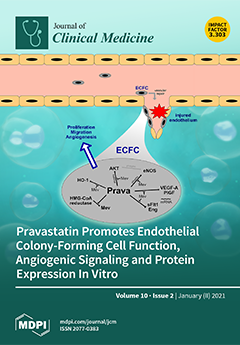Background: Post-transplant lymphoproliferative disorder (PTLD) is a complication of organ transplantation classified according to the WHO as nondestructive, polymorphic, monomorphic, and classic Hodgkin Lymphoma subtypes. In this retrospective study, we investigated the potential of semi-quantitative 2-[
18F]fluoro-2-deoxy-D-glucose ([
18F]FDG) PET/computed tomography
[...] Read more.
Background: Post-transplant lymphoproliferative disorder (PTLD) is a complication of organ transplantation classified according to the WHO as nondestructive, polymorphic, monomorphic, and classic Hodgkin Lymphoma subtypes. In this retrospective study, we investigated the potential of semi-quantitative 2-[
18F]fluoro-2-deoxy-D-glucose ([
18F]FDG) PET/computed tomography (CT)-based parameters to differentiate between the PTLD morphological subtypes.
Methods: 96 patients with histopathologically confirmed PTLD and baseline [
18F]FDG PET/CT between 2009 and 2019 were included. Extracted semi-quantitative measurements included: Maximum, peak, and mean standardized uptake value (SUV
max, SUV
peak, and SUV
mean).
Results: Median SUVs were highest for monomorphic PTLD followed by polymorphic and nondestructive subtypes. The median SUV
peak at the biopsy site was significantly higher in monomorphic PTLD (17.8, interquartile range (IQR):16) than in polymorphic subtypes (9.8, IQR:13.4) and nondestructive (4.1, IQR:6.1) (
p = 0.04 and
p ≤ 0.01, respectively). An SUV
peak ≥ 24.8 was always indicative of a monomorphic PTLD in our dataset. Nevertheless, there was a considerable overlap in SUV across the different morphologies.
Conclusion: The median SUV
peak at the biopsy site was significantly higher in monomorphic PTLD than polymorphic and nondestructive subtypes. However, due to significant SUV overlap across the different subtypes, these values may only serve as an indication of PTLD morphology, and SUV-based parameters cannot replace histopathological classification.
Full article






